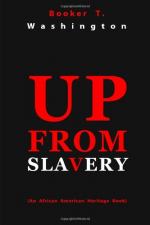From the first, my wife most earnestly devoted her thoughts and time to the work of the school, and was completely one with me in every interest and ambition. She passed away, however, before she had an opportunity of seeing what the school was designed to be.
Chapter X. A Harder Task Than Making Bricks Without Straw
From the very beginning, at Tuskegee, I was determined to have the students do not only the agricultural and domestic work, but to have them erect their own buildings. My plan was to have them, while performing this service, taught the latest and best methods of labour, so that the school would not only get the benefit of their efforts, but the students themselves would be taught to see not only utility in labour, but beauty and dignity; would be taught, in fact, how to lift labour up from mere drudgery and toil, and would learn to love work for its own sake. My plan was not to teach them to work in the old way, but to show them how to make the forces of nature—air, water, steam, electricity, horse-power—assist them in their labour.
At first many advised against the experiment of having the buildings erected by the labour of the students, but I was determined to stick to it. I told those who doubted the wisdom of the plan that I knew that our first buildings would not be so comfortable or so complete in their finish as buildings erected by the experienced hands of outside workmen, but that in the teaching of civilization, self-help, and self-reliance, the erection of buildings by the students themselves would more than compensate for any lack of comfort or fine finish.
I further told those who doubted the wisdom of this plan, that the majority of our students came to us in poverty, from the cabins of the cotton, sugar, and rice plantations of the South, and that while I knew it would please the students very much to place them at once in finely constructed buildings, I felt that it would be following out a more natural process of development to teach them how to construct their own buildings. Mistakes I knew would be made, but these mistakes would teach us valuable lessons for the future.
During the now nineteen years’ existence of the Tuskegee school, the plan of having the buildings erected by student labour has been adhered to. In this time forty buildings, counting small and large, have been built, and all except four are almost wholly the product of student labour. As an additional result, hundreds of men are now scattered throughout the South who received their knowledge of mechanics while being taught how to erect these buildings. Skill and knowledge are now handed down from one set of students to another in this way, until at the present time a building of any description or size can be constructed wholly by our instructors and students, from the drawing of the plans to the putting in of the electric fixtures, without going off the grounds for a single workman.




